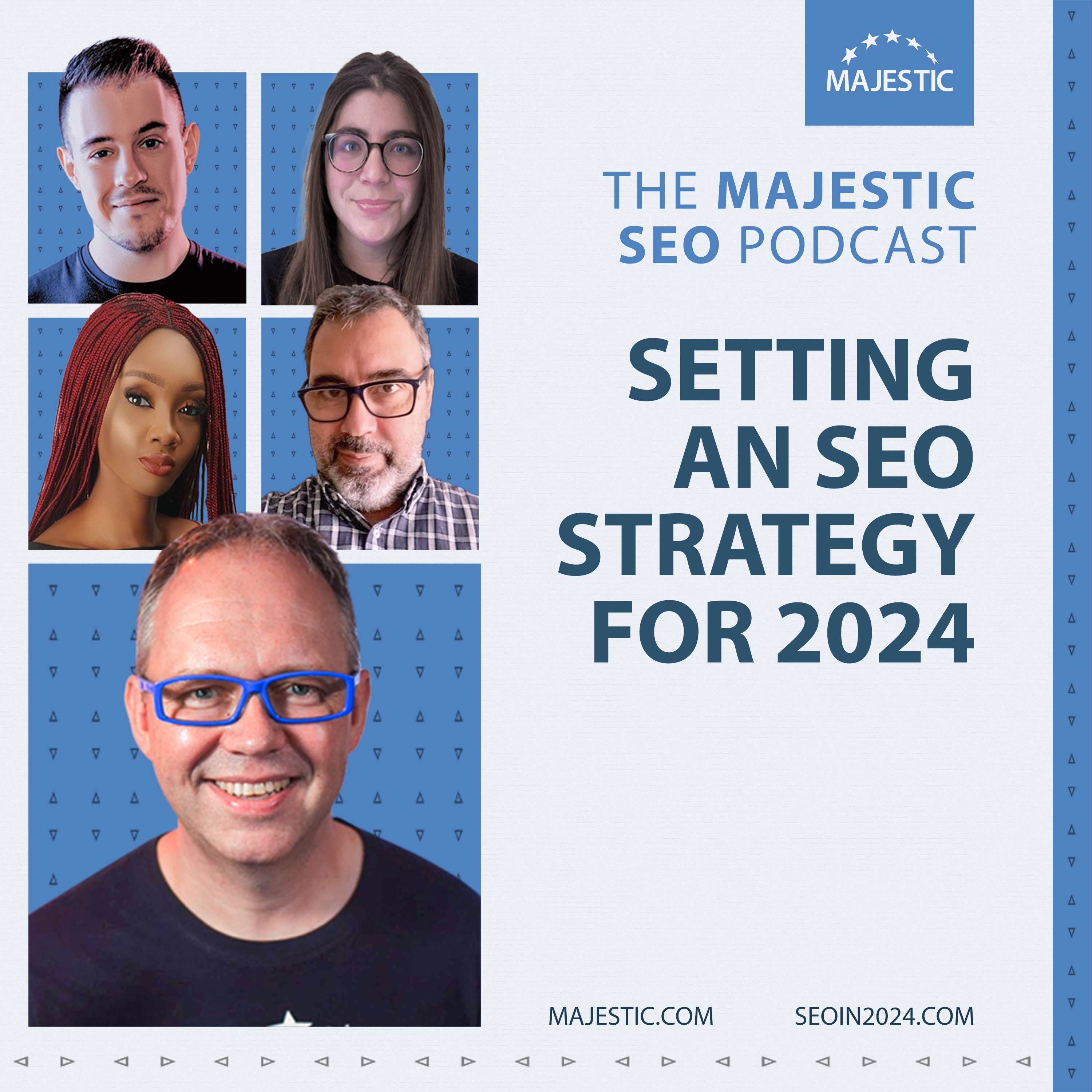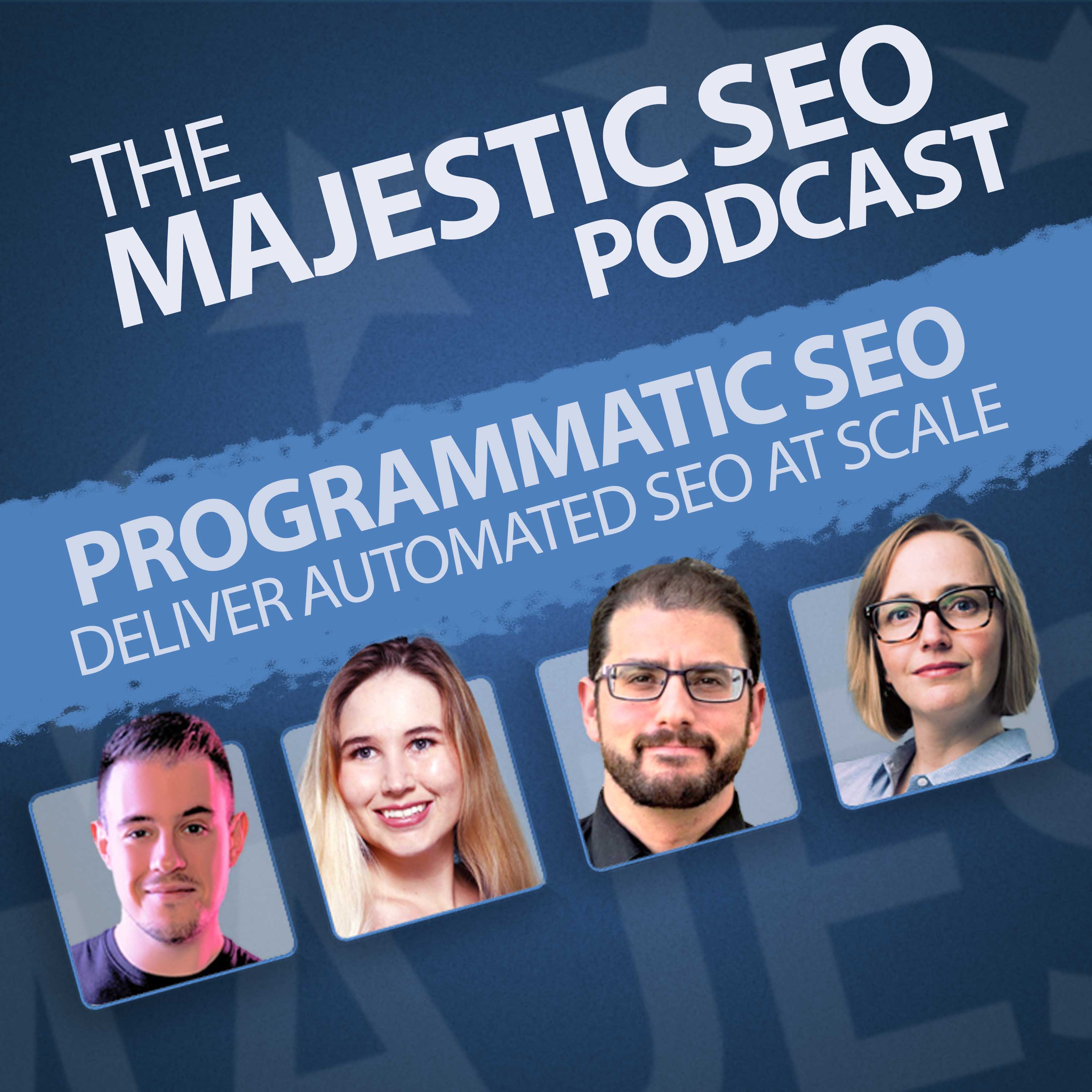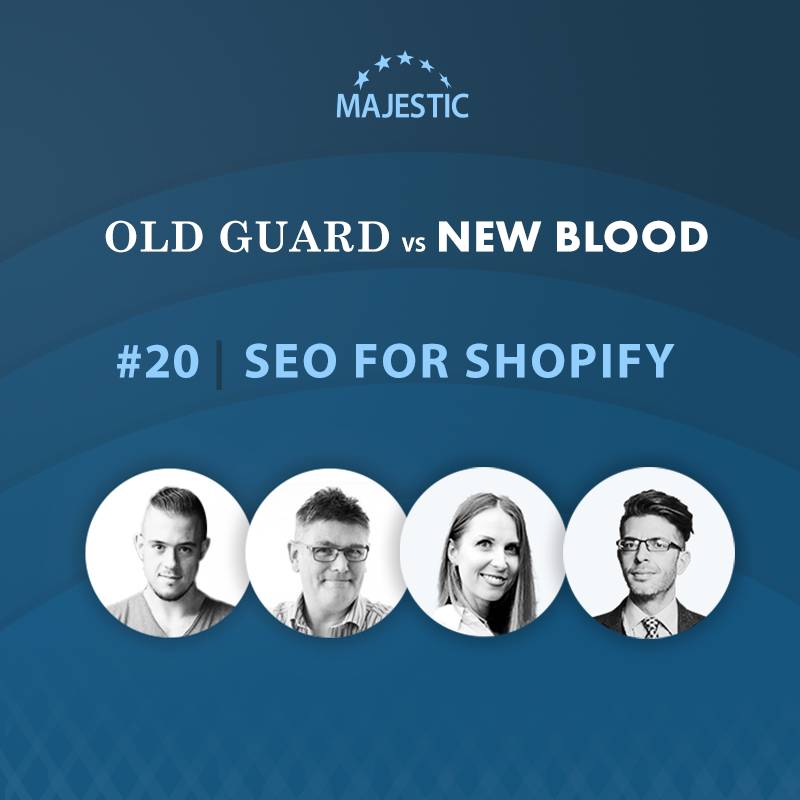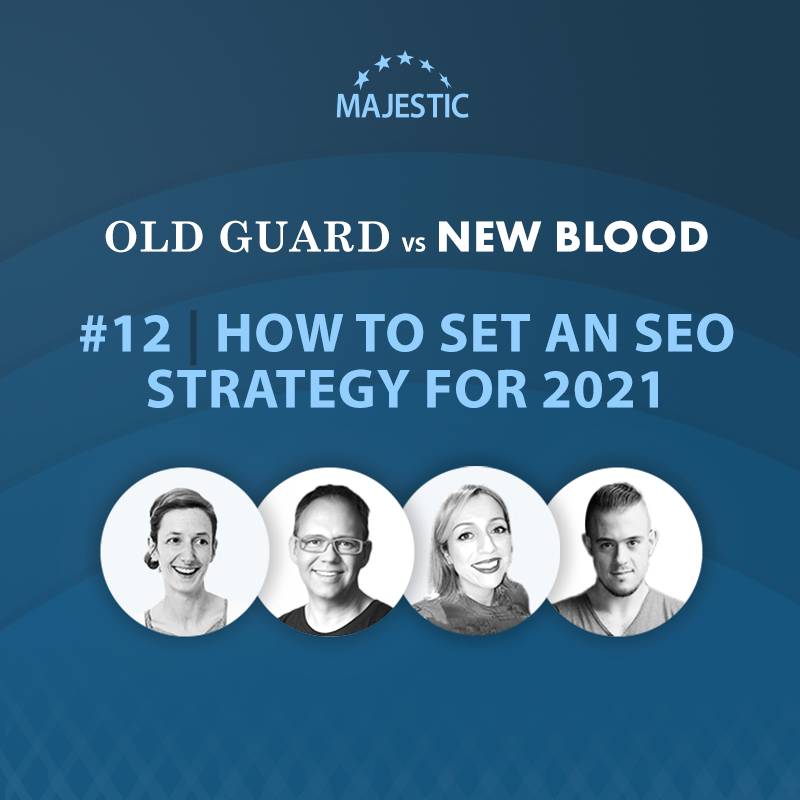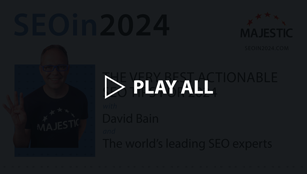-
Site Explorer
- Majestic
- Summary
- Ref Domains
- Backlinks
 New
New Lost
Lost- Context
- Anchor Text
- Pages
- Topics
- Link Graph
- Related Sites
- Advanced Tools
- Author ExplorerBeta
- Summary
- Similar Profiles
- Profile Backlinks
- Attributions
- Compare
-
Link Tools
- My Majestic
- Recent Activity
- Reports
- Campaigns
- Verified Domains
- OpenApps
- API Keys
- Keywords
- Keyword Generator
- Keyword Checker
- Search Explorer
- Link Tools
- Bulk Backlinks
- Neighbourhood Checker
- Submit URLs
- Experimental
- Index Merger
- Link Profile Fight
- Mutual Links
- Solo Links
- PDF Report
- Typo Domain
- Free SEO Tools
- Support
Automate
Kevin Indig
To really boost your efficiency, Growth Advisor Kevin Indig explores just how much of your workload can be handed over to automation.
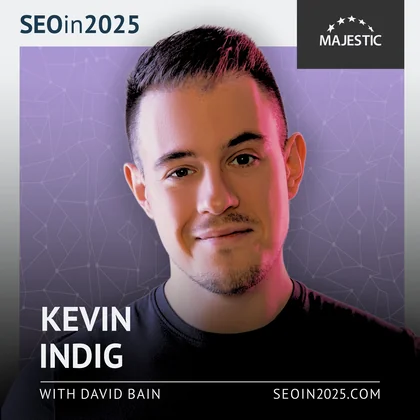
Automate
Kevin says: “Automate.
Automation breaks down into three different components. The first is mining insights – for example, from forums, SERP features, or the content that is ranking best. The second is using AI to create drafts of content. A lot of time can be saved in that area.
The third is to enhance content programmatically. If you’re a marketplace or an aggregator like TripAdvisor or Uber Eats, then there’s a lot that you can do at scale with programmatic content enhancements.”
How do you go about mining insights?
“These days, we have the tools to automate insider information mining. We can use tools to get insights from Reddit, for example. Reddit has gained a lot of visibility in the search results lately and there are tools that you can use to mine the top trending posts for a specific topic, and the best comments or answers.
You can then use that to inform content creation or better understand what your target audience is talking about. You can do the same for SERP features.
Most rank trackers these days allow you to understand what augmentations Google is showing in the search results for your keywords, and then you can systematically optimize for them. For example, you can include more images or higher quality images on your site, create videos for your content, or deprioritise search results that show a lot of SERP features at the top, so you avoid cases where you rank well but get very few clicks for your rank.”
How do you know what to mine for?
“It starts with a good understanding of your audience. 2025 is the year we finally get back to talking to customers, which we haven’t done in marketing for a long time. You need to understand what’s on their minds in terms of their problems, concerns about the product, etc.
Turn that into a prompt that helps you sort through insights on forums like Reddit, Quora, and many others to understand what the more detailed conversations look like. Then, bring that back to your own content creation or copy on your landing page, etc.”
How do you decide on the specific area that you want to create content about, and how do you then target keyword phrases and build out the content from there?
“This is related to the second component I mentioned: I use AI to create drafts of content. I don’t think that AI is in a place where it should write the complete article without revision or supervision, but getting from 0% to 80% is perfectly possible with AI.
Of course, there’s a difference between the types of content you create. If we’re talking about an opinion or thought leadership piece, AI is not very useful. Whereas, if we’re talking about something more evergreen and search-oriented, then AI is incredibly valuable.
There’s an efficiency gain from creating drafts, but there’s also research that you want to do where you look at all the different things that concern your target audience right now and are top of mind. That goes back to actually talking to them and seeing what’s trending on forums. Then, turn that into a plan that includes different types of content.
You will have the things that are more search and keyword-oriented, but other content pieces are less optimized for search and more optimized for engagement and positioning.
If the CEO writes an article about the future they see in the industry or some of their unique experiences with customers and the product, that can be incredibly powerful. It can help users accelerate their journey towards conversion, but it’s not necessarily search-oriented.
In 2025, it’s incredibly important to cover all these different types of content – not from a principled perspective but from an insights-driven perspective. Do you have evidence and data showing that the audience wants an opinion or stance on a topic that’s top of mind?”
Do you take first-party data and combine that with what you find online to decide what to write about?
“Yes. First-party data can come very quantitatively – traffic, engagement, conversions, surveys, polls – but it can also be things like conversations with your target audience, which happen in almost every product-based organisation.
You can combine these qualitative and quantitative insights with data mining to form a more realistic picture. If you do product development and some of your customers really want a certain feature, you could enhance that hypothesis with insights from forums where people talk about the problems they face. If you can tie those two things together, that should translate into your SEO strategy, such as the blog topics or content that you cover.
Tying all of that together, supported by AI and automation tools, makes for a really powerful approach to SEO – and marketing in general.”
Why do you believe that you should create a lot of baseline drafts, and do you have any preferred AI tools for that?
“You can approach this with ChatGPT or any extension for Google Sheets, whether it’s ChatGPT, Gemini, Claude, or any model. You can also use more SEO-specific tools. AirOps has a really good integration, Semrush has some really good tools, and SISTRIX has a good AI writer/content analysis tool.
There are lots of different tools that can create AI content for you. The challenge I want to put out there is to dare to create lots of AI content – but as a draft, not the final published product. A lot of companies are holding back by creating single content pieces.
What I find much more fruitful is to take your keyword strategy and content strategy, where you might aim to go after 30 really high-quality content pieces this quarter. Instead of doing those one by one, you can use an AI tool to create 30 drafts. Then, have your editors or writers build on those drafts, make them better, and add the last 20% that makes those pieces really exceptional and unique.
Companies aren’t leaning into AI content as much as they could. To safeguard against hallucination and the other risks that come with AI, you want to think about them more as a draft rather than the final piece of content.”
How do you select the draft to move forward with, and do you look at keyword phrases and search volume for that?
“I wouldn’t look at topic coverage and keywords at this stage. I also don’t think that finding the best draft or the worst draft is as important as just having a draft.
Think about an artist who has a stack of clay. They look at that and try to imagine the statue that they can make from it, and it’s so much harder to start from zero. You have to outline, think, iterate, etc. If you already have a piece, even if it’s not good yet, it’s a much easier starting point and there’s much more inspiration that can come of it.
Obviously, you want to bring as much experience and expertise into your content as possible. If you are a freelance lawyer or doctor who is supposed to create content for a company, it’s much easier for you to start on top of a draft than start from scratch – and it’s much more efficient for the company.
These drafts give you a decent starting point and then, all of a sudden, the final version becomes a lot more visible, and you get a lot more ideas about what could make this piece really special.”
AI is going to base its drafts on content that already exists, so how do you ensure that you’re not missing gaps in the market?
“That’s where the humans come in. There are probably good systematic or automated approaches to get you there, but it’s important to, at some point, pass the content over from a machine to a human being. They can think about all of the gaps and consider what else could make it really good.
That’s where it matters whether you have specialists on staff or not – who know the industry and the topic inside out, and understand what’s cutting edge and what other angles need to be added.
If you’re writing about the pros and cons of a new weight loss drug, AI can write a decent draft based on what’s already out there. However, only a doctor, pharmacist, or other specialist can bring a unique angle to the content based on their experience. They can make people aware of things that are more based on hands-on industry experience rather than what an AI can infer based on its training data.
That’s why it’s so critical to pass it over to a human who can spot the gaps, but also the things that make the content unique.”
What does it mean to enhance aggregator content programmatically?
“It’s a lot of big words. First, aggregators are sites that can scale content programmatically through user-generated content or an inventory. We’re talking about marketplaces, review sites, or large retailers.
Programmatic content enhancements essentially mean finding pieces of content or insights that you can add to all of your pages at scale, instead of using a one-by-one approach. The opposite would be scaling content through a blog, where every article is unique. On an aggregator like TripAdvisor, you have millions of pages for hotels or restaurants around the world.
Amazon and their AI summaries of reviews are a really good example of enhancing aggregator content programmatically. That’s how you want to think about it. With all the data that you have, what are new insights that you can surface on every page? How can you use AI to summarise key insights and make the user experience better?
It can provide huge benefits from both an SEO perspective and a user perspective, which is probably why SEO is so successful with this approach. The synergies or efficiencies that you can get based on the content you already have can make a huge difference.
Here’s another example. Redfin is a real estate site, where you can find homes to buy, apartments to rent, etc. Redfin will give you the average price of apartments in a certain neighbourhood, based on their data, and they explicitly write that out on the pages. That’s a programmatic enhancement.
It exists on all the city or neighbourhood pages, it’s coming from their data, and it’s incredibly valuable because the customer obviously wants to see the average rent or how much the average home sells for in a neighbourhood. That’s what I’m talking about with programmatic enhancements.
This approach works if you have a lot of pages with the same template. It’s most suitable for aggregator businesses. If you’re not a marketplace, large retailer, or inventory-driven site, then you need to ask yourself, is there a suitable programmatic SEO play for your industry? Can you create a lot of templated pages for a keyword permutation, for example?
If that’s the case, the door is open to you, but the reality is it’s not going to be a possibility for every business.”
If an SEO is struggling for time, what should they stop doing right now so they can spend more time doing what you suggest in 2025?
“A lot of SEOs get bogged down by busy work, and a lot of that is manual. Take a step back and ask yourself, if you could only do one thing, what would it be? That brings you closer to the highest impact item or project, but also the highest impact question.
If you are bogged down with hard coding a lot of structured data into blog articles, for example, that takes a lot of time. It’s incredibly tedious. The single high-impact action that you could take is to step back and think, can you change the CMS or add a better CMS to your blog so that you can make these types of changes at scale?
SEOs often dig into the busy work because it feels good, and it feels like work. However, the bigger impact comes from raising big questions that open the door to lots of changes – and maybe lots of automated instead of manual changes.”
Kevin Indig is a Growth Advisor, and you can find him over at Kevin-Indig.com.
Also with Kevin Indig
Choose Your Own Learning Style
 Video
Video
If you like to get up-close with your favourite SEO experts, these one-to-one interviews might just be for you.
Watch all of our episodes, FREE, on our dedicated SEO in 2025 playlist.
 Podcast
Podcast
Maybe you are more of a listener than a watcher, or prefer to learn while you commute.
SEO in 2025 is available now via all the usual podcast platforms
Don't miss out
Opt-in to receive email updates.
It's the fastest way to find out more about SEO in 2025.
Could we improve this page for you? Please tell us




